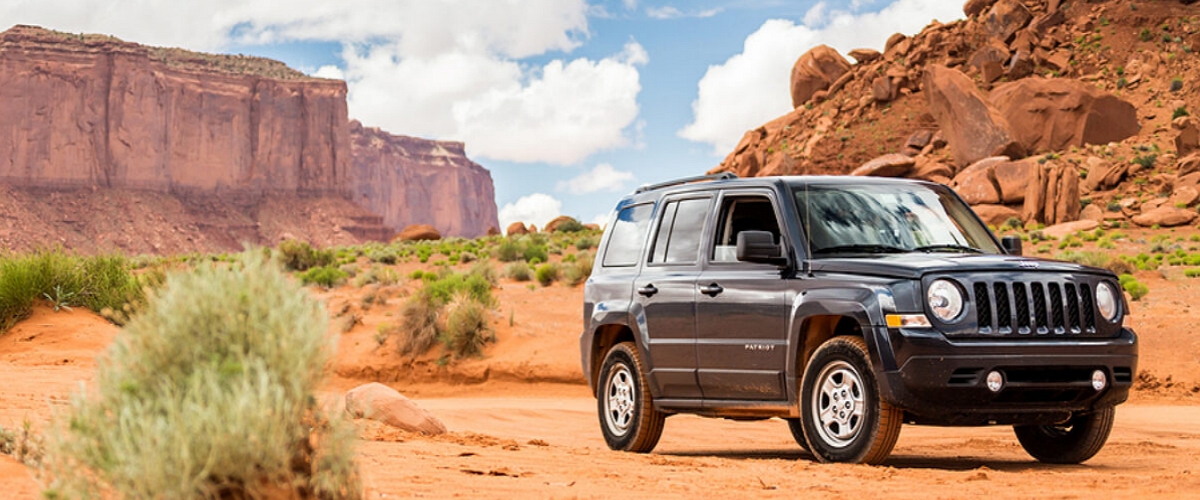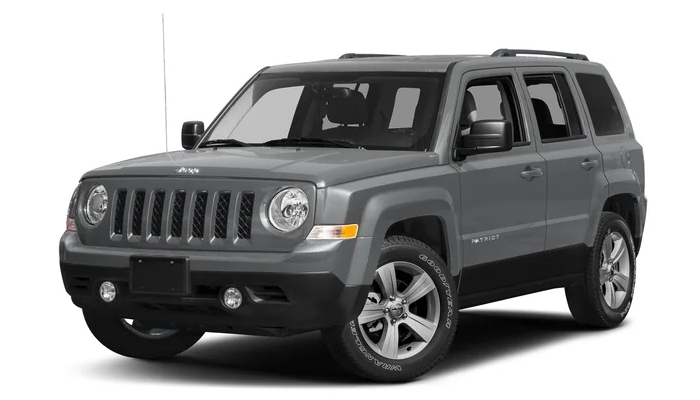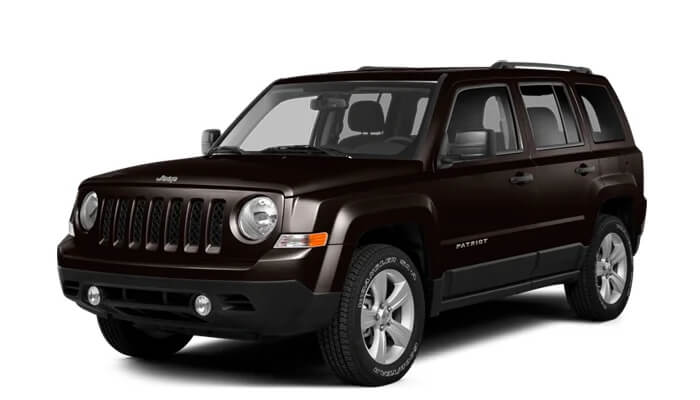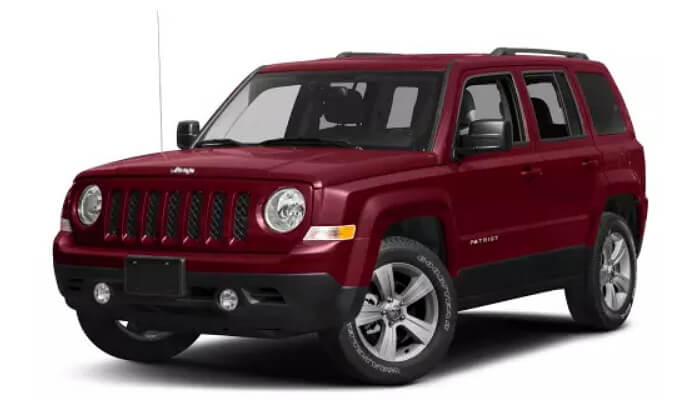Pros and Cons of Lifting Jeep Patriot
When it comes to lifting a Jeep Patriot, there are a few options to consider. Let us make it clear: quite often pros and cons of lifting the Jeep Patriot depend on why you wish to get the vehicle lifted. Here are some detailed pros and cons based on the point of view of someone, who plans to go off-road and that’s why needs to get the Patriot lifted.

Pros of Lifting
- Increased Ground Clearance: Lifting the Jeep Patriot can provide you with improved ground clearance, allowing you to navigate rough terrain more effectively.
- Off-Road Capability: A lifted Patriot can handle off-road conditions better, thanks to increased suspension travel and the ability to accommodate larger tires.
- Firmer Ride: Lifting the Patriot often results in a firmer ride, which can be advantageous for off-road adventures.
- Reduced Chance of Bottoming Out: With a lift kit, there is less chance of the vehicle’s undercarriage hitting obstacles on uneven terrain.
- Improved Articulation: Certain lift kits, like Stu’s coils, allow you to disconnect sway bars, providing better articulation and control off-road.
Cons of Lifting
- Ride Quality: The firmer ride that comes with lifting the Patriot may not be as comfortable for everyday driving on smooth roads.
- Potential Steering and Alignment Issues: Some lift kits can affect steering, installation, handling, and alignment. It’s crucial to choose a reputable brand and have a precise alignment done after the lift installation.
- CV Joint Risks: Lift kits with extreme suspension travel may put a strain on the CV joints, leading to potential issues. However, kits like Stu’s coils maintain a range of travel similar to stock, minimizing CV joint risks.
- Vibration Problems: Certain lift kits, such as the Rocky Road lift, have been associated with vibration issues, mainly due to improper spacer height and CV joint angles.
Recommended Lift Kits
We know, how difficult it may be to find a lift kit that will meet your needs and expectations, as there are so many great options available on the market. That’s why we’ve created a list with a detailed description of what to expect, right from the experience of our experts.
Stu’s coils lift kit, as we’ve mentioned before, is a popular choice that offers a safe lift with alignment hardware provided. It provides increased lift while maintaining the range of travel of the CV joints. Stu’s coils also allow for disconnecting sway bars for improved off-road articulation and control.
If you are looking for a reliable and affordable kit, that will lift your Patriot by 1.6 inches, check out the kit by DealParts. It will not break the budget, while the strut spacers are made of top-quality material, that originates from France. Based on the combination of price and quality, Dealparts Lift Kit is a truly worthy option.
Tire Size and Spacer Options
With a lift kit, you can typically accommodate larger tires. The exact tire size will depend on the lift height and other factors. It’s recommended to consult with a knowledgeable mechanic or specialist to determine the appropriate tire size for your specific lift setup.
As for the spacers, options like puck-style or tapered-style spacers can be considered. Puck-style spacers are more common and provide a simple and cost-effective solution. Tapered-style spacers, which screw in, might also work but are less prevalent for the Jeep Patriot.
Ultimately, the decision to lift your Jeep Patriot depends on your specific needs and preferences. Consider your intended usage, such as off-roading or improved aesthetics, and make sure to take an informed decision about the parts to use.
Some technical aspects to consider
When conducting a search regarding the issue of RRO and vibration, it becomes apparent that numerous owners of the Patriot have encountered issues over the course of several years. In my humble opinion, the underlying cause can be attributed to the excessive height of the RRO spacer, measuring 1 3/4 inches. This excessive height allows the driver’s side inner CV joint to surpass its maximum angle of 23 degrees, resulting in binding and subsequently leading to the vibration phenomenon.
To address this vibration problem, one member attempted to mitigate it by adding sub-frame spacers. However, this solution proved to be ineffective since the sub-frame spacers counteract the lift spacers, nullifying the gained clearance.
The Perfomex leveling kit, similar to the RRO, functions as a spacer mounted atop the strut, utilizing ATV wheel spacers. However, this particular spacer measures only about an inch and does not expose the CV axle to as high an angle as the RRO does. Consequently, the vibration issues are less pronounced. Nevertheless, it should be noted that the Perfomex leveling kit does not provide the same degree of lift as the RRO does. In my opinion, considering the lack of included alignment hardware and the need for separate purchases, it is relatively expensive, priced at approximately $300 USD.
Stu’s coils lift kit, on the other hand, offers to lift through a distinct spring rate, which prevents excessive compression of the spring under the vehicle’s weight compared to the stock configuration. This trade-off results in a firmer ride, which proves beneficial for off-road applications while reducing the likelihood of bottoming out. Moreover, Stu’s lift kit poses no risk to the CV joints, as the range of travel concerning the inner CV joints remains consistent with the stock configuration. Additionally, Stu’s lift kit allows for the disconnection of sway bars, enhancing articulation and providing better control during off-road endeavors, all without the concern of pushing the CV joints to their limits.
Personally, I have been utilizing Stu’s lift kit for several years now without encountering any issues. Furthermore, I am currently conducting an experiment involving Stu’s lift kit in conjunction with a self-made 1-inch spacer lift, and thus far, the results have been promising. I have achieved approximately 11 inches of clearance beneath the lowest point of the front skid plate, and there is no vibration. It is important to note that I am using 29-inch tires.
An alternative approach to consider is the Rough Country lift kit, which combines a coil spring spacer, akin to Stu’s method, with a minor spacer lift in the front and customized control arms at the rear. Although the Rough Country lift kit appears promising, it is relatively new to the market, and feedback regarding its performance remains limited.
If you are looking for a reliable and proven complete lift kit that alleviates concerns related to vibration, alignment, CV joints, and the potential for adding a spacer to achieve additional lift, my present opinion leans toward recommending Stu’s lift kit as a safe bet.
Questions and Answers
Q: Can a Jeep Patriot be lifted without any steering/installation/handling/alignment problems?
A: Yes, a Jeep Patriot can be lifted without encountering significant steering, installation, handling, or alignment problems.
Q: What is the best brand for a lift kit for the Jeep Patriot?
A: Stu’s coil lift kit is a recommended option for lifting the Jeep Patriot. It provides lift through a different spring rate that prevents excessive compression and maintains the range of travel for the inner CV joints. It also allows for disconnecting the sway bars for better articulation and control off-road.
Q: Are there any lift kits from Rocky Road or Performex worth considering?
A: While Rocky Road and Performex offer lift kits, there have been some negative reviews regarding vibration issues with Rocky Road lift kits. Performex offers a leveling kit with ATV wheel spacers, providing less lift than Rocky Road but avoiding vibration problems. However, it is relatively expensive, and the lack of alignment hardware might require additional purchases.
Q: Can a lift kit be combined with a spacer for more lift?
A: Yes, it is possible to combine a lift kit with a spacer for additional lift. However, it is important to consider the compatibility of the components and ensure they are designed to work together effectively.
Q: What are the trade-offs of using Stu’s coil lift kit?
A: Stu’s coils lift kit provides a firmer ride, which can be beneficial off-road, and reduces the chances of bottoming out. It also does not pose a risk to the CV joints, as the range of other lift kits does.




